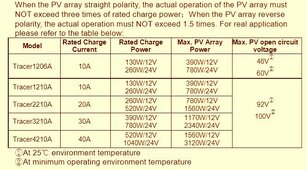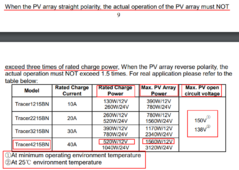If I am understanding right so far overpanelling is just taking advantage of the fact that the panels will never achieve maximum rated output so we are using more to eek out what we can of those lower solar days. Also once summer comes round and they would be achieving the highest output they could, if it goes over the rated maximum, they will just shed off the excess wattage as heat dissipation? Is that right or did I miss anything?
So I looked on the forum beforehand and saw people have greatly overpanelled tracer bns even beyond my stated intended wattage. I think I saw someone post over 1100w. I looked in the manual and it said 520w max and 780 pv array max. So I am fine? I am thinking 4 or maybe even 5 if I can squeeze one more, totalling 3, on the side.
For reference these are the panels I want to use. Either 4 or 5 adding to my existing two.
Hmm I just saw there are 200w flexibles. Could I mix and match with the existing 2 of the first ones I linked above or no?
Would be 12v volt and in series btw.
So I looked on the forum beforehand and saw people have greatly overpanelled tracer bns even beyond my stated intended wattage. I think I saw someone post over 1100w. I looked in the manual and it said 520w max and 780 pv array max. So I am fine? I am thinking 4 or maybe even 5 if I can squeeze one more, totalling 3, on the side.
For reference these are the panels I want to use. Either 4 or 5 adding to my existing two.
Hmm I just saw there are 200w flexibles. Could I mix and match with the existing 2 of the first ones I linked above or no?
Would be 12v volt and in series btw.
Last edited:




